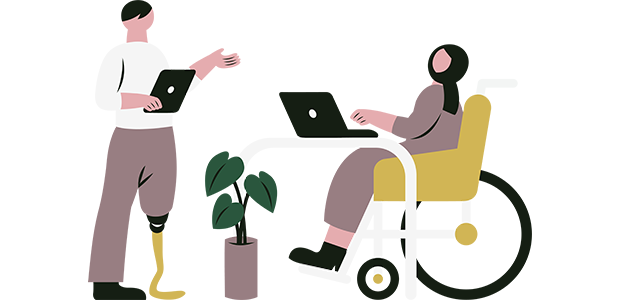
Is your business ready for the European Accessibility Act?
As digital customer experiences become central to everyday life, marketers need to remove barriers and create inclusive content. That’s where the European Accessibility Act (EAA) comes in. Taking effect on June 28 2025, the directive will shift how businesses approach digital communications.
EAA in a nutshell
This means that any business providing products or services to EU customers, whether based in Europe or not, will need to meet certain accessibility requirements. In simple terms, the EAA ensures that people with disabilities can access digital content just as easily as anyone else. This will apply to email and other digital marketing channels. And, its impact goes beyond permanent disabilities. Think of elderly persons trying to read tiny text on a mobile device, or someone with a broken wrist temporarily relying on voice commands. Situational and temporary impairments can affect anyone at any time, so accessibility benefits everyone.
What does this mean for SMEs?
While non-compliance could lead to fines and restrictions, the EAA acknowledges that smaller businesses might face challenges in meeting all its requirements. For example, if the burden is disproportionate, smaller businesses might be exempt from certain obligations, especially if they can prove that compliance causes unexpected financial strains. Still, businesses should be ready to demonstrate a real effort toward accessibility as customers increasingly operate in the digital world.
So, what does accessibility look like?
Take marketing emails as an example. Businesses communicating with their customers via email need to ensure the templates provide alternative text for images, ensure text-to-speech functionalities, or are compatible with assistive technologies like screen readers. Without these, a visually impaired customer may be unable to read their billing statement, or a dyslexic user might struggle to navigate a promotional email. In either case, the user experience is broken, and brand trust begins to erode.
Accessible customer support is equally crucial. In practice, this means offering services such as voice messages that convert to text for deaf users, live chat compatible with screen readers, or customer service over accessible messaging apps like WhatsApp and Rich Communication Services (RCS).
The accessibility problem is compounded by broader deliverability challenges. According to a recent Sinch Mailjet report, 88% of email senders don’t know what their email delivery rate is actually measuring, while 39% rarely or never conduct email list hygiene. This leaves businesses in the dark about whether their emails are reaching customers at all. When accessibility and deliverability intersect, the stakes are even higher. If a user can’t access an email – and it didn’t even make it to their inbox - the message a business wants to communicate is lost twice over.
The implications of inaccessible customer experiences are real, especially in industries dealing with sensitive customer information – such as financial services. Increasingly, customers are using digital applications instead of in-branch experiences. And, they value personalisation. Accenture’s recent Banking Consumer Study revealed that 72% of customers say personalisation influences their choice of bank. Here, accessible communications directly influence satisfaction and loyalty. For example, if a visually impaired user can’t navigate their transaction history, or if an email fails to scale properly on mobile. Once the EEA takes effect, the risk won’t only erode customer trust – it could become a compliance violation.
The time to act is now
The EAA gives businesses a critical opportunity to get ahead by acting now. By adapting early, marketers can streamline the path to compliance and demonstrate a commitment to inclusion, which will in turn position their brand as a leader in inclusivity. Accessibility isn’t just a legal obligation; it’s a powerful driver of trust, connection, and long-term customer loyalty.
For more startup news, check out the other articles on the website, and subscribe to the magazine for free. Listen to The Cereal Entrepreneur podcast for more interviews with entrepreneurs and big-hitters in the startup ecosystem.

